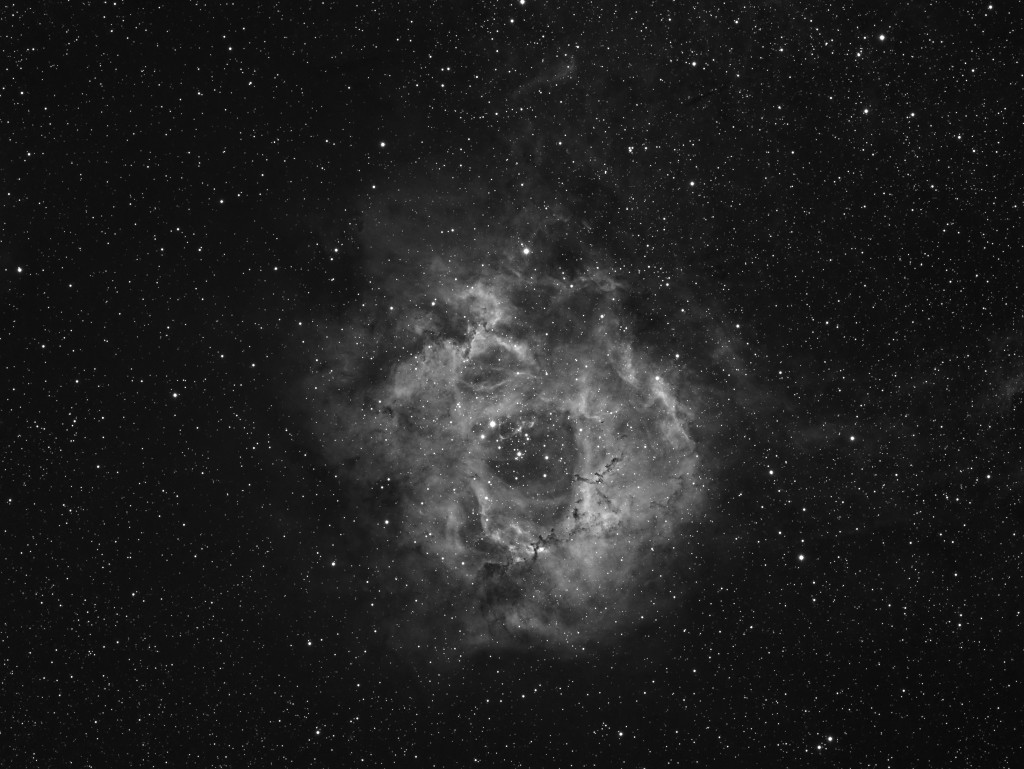 This is a first light image from a SMC Pentax 67 300mm lens attached to my QSI583 wide-field imaging rig. The rig is housed in my relocated observatory situated in the Polden Hills of Somerset. The image is a monochrome hydrogen alpha (Ha) image of the Rosette Nebula located in the constellation of Monoceros. Arguably one of the finest HII regions in the northern sky the region is a very active area of star formation covering approximately 130 light years and containing some 10,000 solar masses of gas and dust.
This is a first light image from a SMC Pentax 67 300mm lens attached to my QSI583 wide-field imaging rig. The rig is housed in my relocated observatory situated in the Polden Hills of Somerset. The image is a monochrome hydrogen alpha (Ha) image of the Rosette Nebula located in the constellation of Monoceros. Arguably one of the finest HII regions in the northern sky the region is a very active area of star formation covering approximately 130 light years and containing some 10,000 solar masses of gas and dust.
As a vintage Pentax lens the SMC Pentax 67 1:4/300 is noted for its image quality and sharpness but is not popular with photographers because of its size and weight. However this is not an issue when it is mounted on an EQ6 equatorial mount for astrophotography. This lens is the 1987 variant recently purchased in mint condition from an eBay seller in Japan. I stopped the lens down to F/5.6 to improve image sharpness and to obtain good quality and repeatable V-curves for auto focussing. The resulting image is still a little soft and further experimentation is required to optimise auto focussing of the lens.
Right ascension: 6h 32m 46.0s | Declination: +4° 55′ 25″ | Distance: 5,000 Light Years
Field of view: 206 x 155 arcmin
Camera: QSI 583
Optics: SMC Pentax 6×7 300mm Lens F/4
Guiding: Off-axis with Lodestar guider
Filters: Baader Ha (7nm)
Exposures: Ha 25 x 20 min
Total exposure: 8.3 hours
Image composition: Monochrome Ha
Scale: 2.72 arcsec/pixel
Image acquired: January – February 2015
Image capture with MaxIm DL, FocusMax, ACP; Image processed with MaxIm DL and Photoshop CS4 and HDR toning in Photoshop CC 2014.